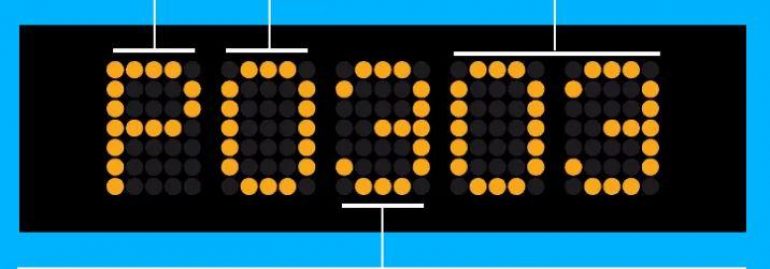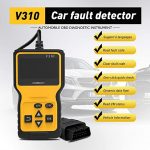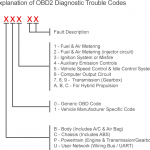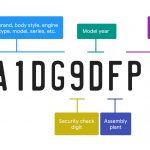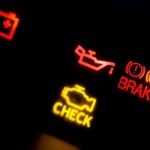If you’ve noticed that your car’s dashboard displays a diagnostic trouble code, you’re not alone. There are many types of these codes and they are all unique to each vehicle. The main differences between them are the Letters, Numbers, and Message. Here are some tips to help you interpret the codes you see on your dashboard. After you’ve learned the basics of troubleshooting a DTC, you can begin repairing your car.
Five-digit code
If you have a car, you may have come across the diagnostic trouble code “5-digit” while driving. What does this mean? If it’s a code for a transmission related issue, it means that something is wrong with the transmission, while if it’s a code for a sensor failure, it means that your car’s electrical system is overheating and it will not start. The best way to know what this code means is to consult your owner’s manual.
Unlike other codes, diagnostic trouble codes are alphanumeric in nature. Each one refers to a particular problem within a vehicle. They were originally developed by the Society of Automotive Engineers in order to meet the emission requirements for the OBD-II protocol in the US. Trouble codes fall into one of four categories: generic or global trouble codes and enhanced or manufacturer-specific codes. Once you know what each one means, it’s much easier to troubleshoot your car.
In addition to the five-digit code, manufacturers have added additional information that may help diagnose your car’s problem faster. These “symptom categories” are made up of a two-digit code that follows a five-digit code. The first digit is a symptom category, while the second identifies a subsystem. Sometimes, fault codes do not activate the MIL. This is where the two-digit code comes in handy.
While DTCs are not universal, they do have some common features. First of all, they are easy to remember. You’ll understand the meaning of each code. This information will make your life easier, and your car will run more smoothly. You’ll save a lot of time and money by learning the meaning of each DTC. The SAE developed enhanced DTC standards. The standards for a DTC are standardized to make the diagnosis faster and more accurate.
In case you’re wondering what code P0128 means, it simply means that the engine’s coolant is below the temperature regulator. This code is not specific to any one manufacturer, but is standardized and can be interpreted according to SAE definitions. This problem is in the engine’s fuel and air metering subsystem, which will result in a P0128 code. A professional repair shop will be able to diagnose this problem much easier.
Letters
The diagnostic trouble code, or DTC, is a string of five digits that identify a particular problem with your car. A vehicle’s first digit represents the engine, transmission, or driveshaft; the second digit relates to the body or chassis components, and the third character specifies the type of fault or the location of a problem. Most cars use the OBD protocol to display DTCs. While the first digit is universal, it is often unclear where a fault is located.
A typical DTC letter is P0246. It means “P-0-2-46.” A DTC identifies a specific problem with your car. This code may be a problem with a particular subsystem, or could be an indication of a clogged valve. To properly diagnose a problem, you’ll need a professional scan tool. Listed below are the different categories of trouble codes. You should first determine the type of problem you’re experiencing by looking at the first digit.
The P0300 DTC means that a vehicle is experiencing a problem with the engine, transmission, or fuel. The P0300 code is often triggered by the P0301-P0308 DTC codes. The J1939 code is four digits in length. The first digit indicates the problem category and the second digit represents a subsystem. The first digit indicates the problem, while the second digit is more specific, giving you more information on what’s wrong with your car.
Another way to troubleshoot your car is to have the on-board computer read the codes from the car’s obdII system. The DTC is stored in the vehicle’s onboard computer and appears when the car’s engine is malfunctioning. You can also use the codes to diagnose problems and track the location of vehicles in your fleet. This method is also used by GPS fleet managers. However, you should always consult a professional before you attempt any repairs.
Numbers
Diagnostic trouble code numbers are codes that your car displays when something goes wrong. These numbers will tell you what subsystem of your car is failing. These codes are typically five digits long and comprise of two parts: the first consists of alphabets, while the second part has a digit from one to nine. A “9” means a problem with your transmission, while an “8” means a sensor failure. You can then lookup a trouble code number to diagnose a specific problem.
Some of the most common types of codes are B, C, and U. These codes are used to diagnose problems with on-board computer systems and the engine and transmission. Some codes also contain information on your car’s battery or the condition of your transmission. The first digit of a trouble code is usually a generic code, while other codes are manufacturer specific. If you know the brand of your vehicle, the diagnostic trouble code will be in this format.
If you know how to read the codes, you can easily diagnose your car’s problems. These codes are grouped into five subfamilies based on function. For example, P0128 codes indicate that your engine’s coolant temperature is too low, whereas C0128 codes are specific to a particular manufacturer. The manufacturer may also assign codes with hexadecimal digits, as well as add increments. There are approximately 11,000 definitions for each code.
Diagnostic trouble codes are stored by your car’s on-board computer diagnostic system. When any sensor’s reading is outside of the normal range, it generates a diagnostic trouble code. The computer’s diagnostic system then stores the code and alerts you to the problem. If the code indicates a problem that needs to be fixed, a mechanic can diagnose the problem by replacing the parts. The SAE maintains a manual for automakers to help them understand the codes.
You can also find out more information by obtaining a service manual or subscription to AC Delco Tech Info. Some code numbers may have multiple definitions, and the same code can indicate different faults in different model years and models. For example, a DTC that displays a fault for a Ford may not be the same as one for a Chevy, so the correct method of repair for that vehicle may be different. You can check the code number in your car’s owner’s manual or at your mechanic’s shop.
Message
A Diagnostic trouble code message (DTC) is a series of five-character numbers and letters that tells you if something is wrong with your car. The codes are generated by your car’s onboard diagnostics system and will help you identify which system is malfunctioning. A P0442 DTC indicates a leak in the evaporative emissions system. Modern cars generate hundreds of DTCs. Fortunately, there are easy ways to interpret these messages.
If you have an EGR system check engine light, the problem is with the EGR system, which regulates combustion temperatures and nitrogen oxide output. If this code is present, you may have noticed lower fuel economy, rough idling, or pre-ignition knocking. However, there are several causes for the code. The problem may be triggered by a clogged catalytic converter, electrical problems within the EGR circuit, or a problem with the engine computer.
Trouble codes are divided into four categories. Powertrain codes, or “P” codes, describe the system affecting the engine and transmission. Other codes, or “U” codes, deal with shared computer systems and networks. Most trouble codes are generic, but some are specific to a specific manufacturer. In addition, the first digit of a trouble code indicates whether it’s generic or manufacturer-specific. If a car has multiple codes, then the trouble code is in the powertrain or the transmission.
DM2 messages contain a list of active DTCs. These are sent by a transport protocol and aren’t periodic. They are sent only when a user requests a PGN 59904. If you have more than one DTC, the DM2 message is used to clear all diagnostic information related to those DTCs. DM3 messages can be a sign of a malfunction. In either case, you should seek immediate help from a certified mechanic.


